I met Jenifer Eggleston ten years ago when I started working for the National Trust for Historic Preservation. While she worked in the Washington, DC office, she came to Charleston, SC to fulfill a requirement of her duties. Right after Hurricane Katrina Jenifer was no longer employed with the National Trust but we both worked on matters of preservation in New Orleans. Last year, Jenifer contacted me with an idea that she had about me participating in the 74th Annual Holly Springs Pilgrimage Tour of Historic Homes which is an annual tour of the mansions in the town. Jenifer’s grand idea was to combine the pilgrimage with the Slave Dwelling Project and seek a funder that could help make it happen. Similar to the trip that I took to Missouri, the tentative date that we set for the trip to Mississippi was pending approval of the grant request. Like Missouri the proposal was approved through the state’s Humanities Council.
From the time that I tentatively put this event on my calendar, I was skeptical because the Mississippi history etched in my mind was not pleasant. Medger Evers, Emmitt Till, James Chaney, Andrew Goodman, Michael Schwerner were all killed in the state of Mississippi in pursuit of their happiness. The movie Mississippi Burning as well as two books that I read recently Rising Tide by John M. Barry and The Warmth of Other Suns by Isabel Wilkerson did not paint a good picture of the treatment of African Americans in the state of Mississippi. I knew that in order for me to carry on with this assignment I had to get past those atrocities by thinking of them as history, Hollywood and books based on past accounts.

Mississippi Industrial College
On Thursday, April 12, 2012, my first scheduled task was to conduct a lecture on the Slave Dwelling Project at Rust, a Historically Black College located in Holly Springs. This would not be a problem because I had spoken on this subject at many colleges and universities before. The group was small but they got the same lecture that a larger group would have gotten. Something on that campus really bothered me. The buildings that were once Mississippi Industrial College from 1905 – 1982 which gave rise to Rust College are all being neglected. It bothered me so much that I insisted on going back the next day to take photographs.
That evening included an open reception at Montrose, the home of the Holly Spring Garden Club. A diverse crowd of influential people of Holly Springs were there and were treated to a presentation from me about the Slave Dwelling Project. They were treated to a bonus when Rhonda K. Peairs, Documentary Projects Coordinator of the William Winter Institute for Racial Reconciliation of the University of Mississippi in Oxford spoke to them.
Hugh Craft House Slave Quarters and Kitchen
Dinner that night included a bonus. Nearby Oxford, Mississippi was our destination. While there I visited Rowan Oak, also known as William Faulkner House. It is a primitive Greek Revival house built in the 1840s by Robert Sheegog. Faulkner purchased the house when it was in disrepair in the 1930s and did many of the renovations himself and lived there until 1962. The bonus was the fact that there is an intact slave dwelling on the property, moreover I got an invitation to spend a night there which will certainly happen in the future. No disrespect to Mr. Faulkner, but unfortunately, while conducting my perfunctory research on Rowan Oak, I have not yet come across any information that mentions the intact slave dwelling, which further justifies this project.
Burton Place
My second night stay would be at the slave dwelling located at Burton Place. The brick dwelling was behind the big house and to the right. It included a kitchen and two separate living spaces all on one level. For the second consecutive night, I slept in the dwelling alone and in a nice comfortable bed in the kitchen. I found the space to be over adorned knowing that anything that was not necessary for cooking would not be located in that space. Unlike the previous day, I was not provided with a lot of researched information on the past inhabitants of that space.

Burton Place
This worked in my favor because I could draw on all the knowledge that I gained by sleeping in 33 other slave dwellings prior to this one. There was one interpretive sign inside the dwelling that was quite telling, from the 1850 census, it listed eight slaves by gender and age only. I found it interesting that in 1850 they would only have a first name but even that was not put on a census form. That could be very frustrating for someone doing genealogical research.
The 1860 census revealed that the owner, Mary Malvina Shields obtained seventy-two additional slaves for a total of eighty. This increase in the number of slaves was an indication that she was a planter and was taking advantage of the cotton growing opportunities that existed. Throughout the day, a steady flow of people came through the dwelling to hear the interpretive presentation that I gave. Unlike the previous day, the participants had access to the mansion which worked out well because they all got a complete story. As time was winding down, I was feeling a bit dejected because no African Americans had come to the slave dwelling or the big house for that matter. Then it happened. One group of about twenty African Americans came to hear the presentation. The group listened intently and asked lots of questions after the presentation. The group leaders were local but the bulk of the group was from Ohio. The leaders stated that up until this point they never felt welcome at the pilgrimage and were thrilled that this year the Behind the Big House Tour was offered.
Prior to leaving Holly Spring, my host took me on a windshield tour of the other extant former slave dwellings. We looked for the telltale signs for slave dwellings, location, chimneys, windows, etc. For a relatively small town, I was surprised by the number that still exists. Some of the buildings have evolved into storage spaces, garages, pool houses or guest houses and some are just deteriorating.
Reflections on Holley Springs
[ngg_images gallery_ids=”21″ display_type=”photocrati-nextgen_pro_horizontal_filmstrip” gallery_width=“500″ gallery_height=“500]
The success of participating in the Holly Springs Pilgrimage made me think about other established house tours and pilgrimages. Years ago I would volunteer for the Preservation Society of Charleston, SC tour of homes. As I recall, all of the focus was on the mansions and not the outbuildings. For Holly Springs this was their 74th Annual Holly Springs Pilgrimage Tour of Historic Homes, I know that there are several other well established tour of historic homes in urban areas. Several of those homes in the north and south were built while slavery existed in those areas, therefore they may have outbuildings where slaves once lived. Additionally, one should not dismiss the possibility that they may have lived in the attics or basements of mansions. I now wonder how many other established house tours are willing to take the bold step that Holly Springs did and tell the stories of the slaves that lived in the outbuildings associated with the big house.
Since starting the Slave Dwelling Project in 2010, I have had several revelations. In seeking extant former slave dwellings sometimes they are hidden in plain view especially when we factor in urban slavery. Some property owners may own some of these structures and not know their history. Some may know the history but for various reasons choose not to make it known to others. I am often asked how many extant slave dwellings still exist. I respond that factoring in urban slavery makes placing a number on those dwellings difficult. It could be less of a challenge to answer that question if we had more places like Holly Springs, Mississippi that are willing to tell the whole story of their built environment.
Jenifer Eggleston’s Reflections
When I first moved to Holly Springs, Mississippi in the fall of 2008, my husband who maintains a private practice in historic restoration gave me the cook’s tour of the town with its impressive collection of historic structures from several time periods. While Holly Springs has an inarguably inspiring architectural inventory, what spoke to me was the considerable number of buildings directly related to slavery. Many towns had lost much if not all of their slave-related structures but Holly Springs had maintained many of these rare surviving buildings.
That so many of Holly Springs’ vital, tangible links to the legacy of slavery had survived is primarily owed to their remaining in continuous use. Their original form had often obscured making it difficult to recognize them for their historic intent and value. In many cases, the original purpose of these culturally significant buildings was either forgotten, due to the passing of living memory or by design or a combination of both. Either way, it was clear that a significant part of the historic narrative was missing. While a number of the silent witnesses – the structures directly related to the slaves’ accommodations were extant–the stories of the people who lived and used these buildings was largely being forgotten. The personal histories of the “Big Houses” had been preserved but what of those personal lives “Behind the Big House?”
Doing what one does in down moments I was searching Facebook one night and stumbled across a former colleague and friend, Joseph McGill’s page. That’s when I learned of his inspiring work with the Slave Dwelling Project and thus began a conversation about how Holly Springs could highlight and interpret these rare surviving buildings by bringing Joseph to our community during our annual Pilgrimage Tour of Historic Homes. Thanks to his support of the idea and some last minute grant writing for a Mississippi Humanities Council grant this idea came alive last week from April 12th through 15th.
Joseph McGill for his part, spent an evening in two of the more intact slaves’ quarters and remained on site the following days to give visitors a first-hand interpretation of what life might have been like “Behind the Big House”. Most of our visitors were on the Pilgrimage tour and this was for many an unexpected view into another side of history, a much-needed addition of a missing historic narrative. Also, many came out just for the “Behind the Big House” tour, which was extremely encouraging for the continuation and development of this program.
Our local historic preservation nonprofit, Preserve Marshall County & Holly Springs, Inc. hopes to continue this initiative with a goal of not only researching but also documenting and advocating for the preservation of these irreplaceable historic resources. We will be sure to share our future work on this project with Joseph and look forward to hosting Joseph and the Slave Dwelling Project in the future.
Finding it difficult to end this posting I thought it would be best to share what two attendees at our Welcome Reception felt as reported by our local newspaper, The South Reporter. Local community supporter and tourism board chairman, Ralph Howard, “the dialogue is long overdue . . .and will help with the economy and tourism in the city” and artist, Randy Hayes ,“I just told him that I thought what he is doing is art . . . I thought the gathering more truly represented Holly Springs than any social event I can remember.”

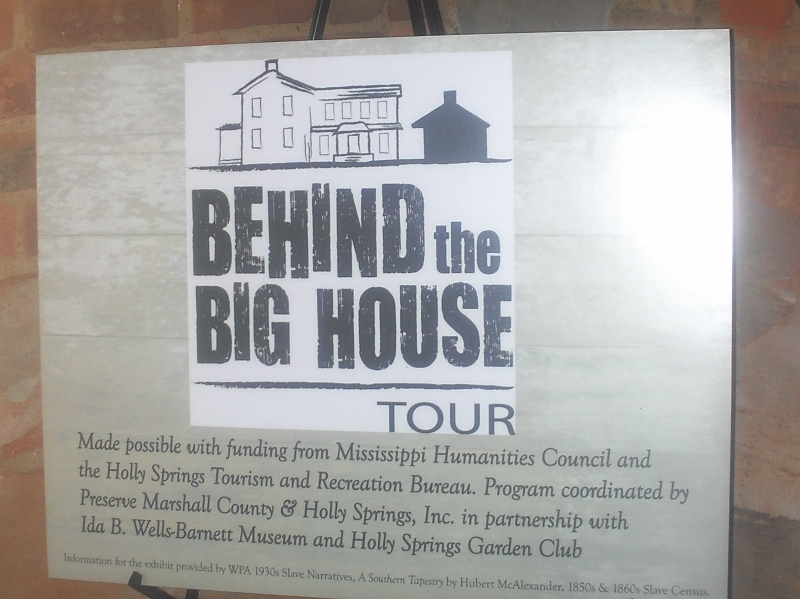
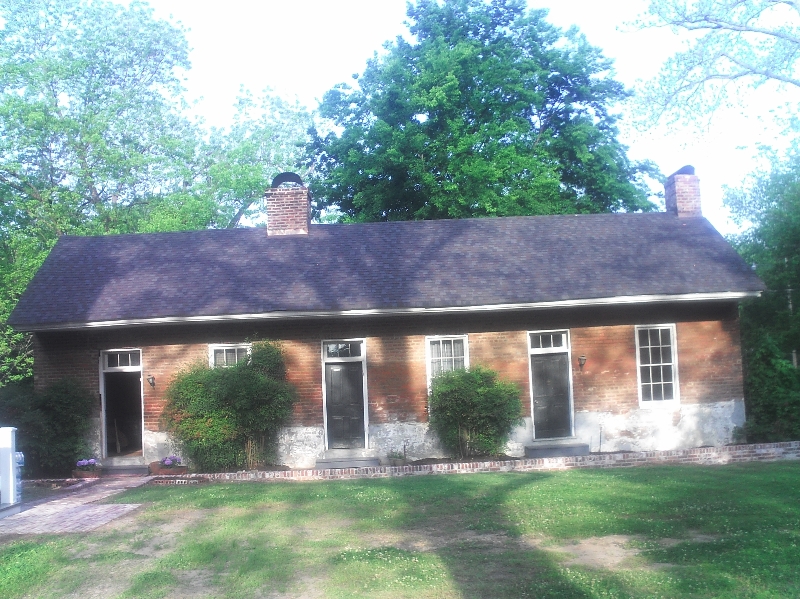
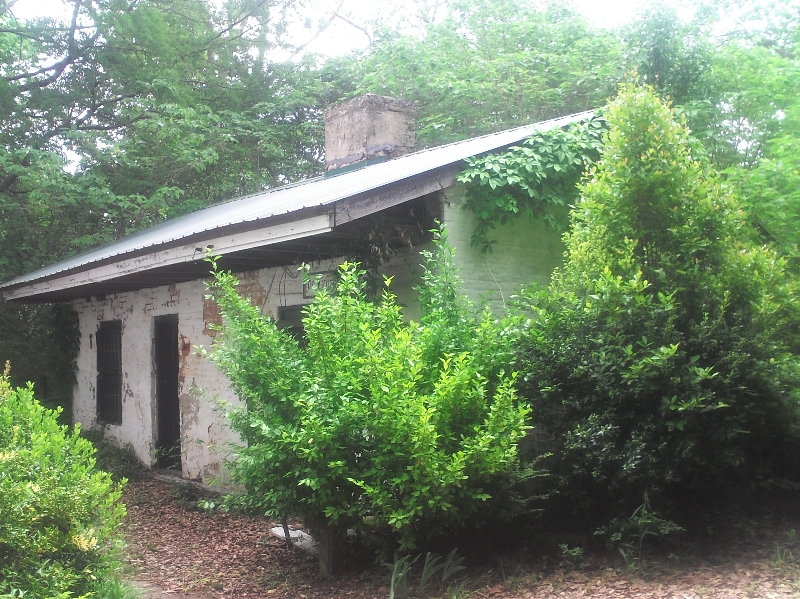
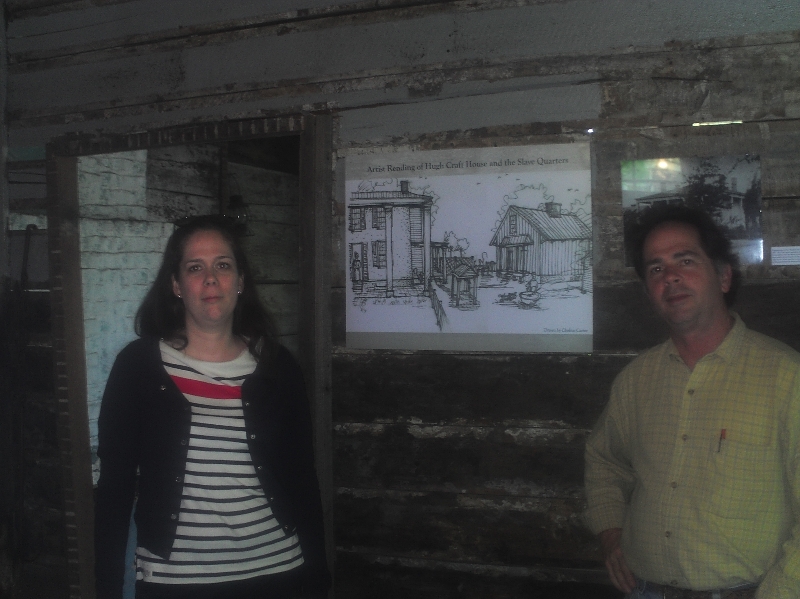
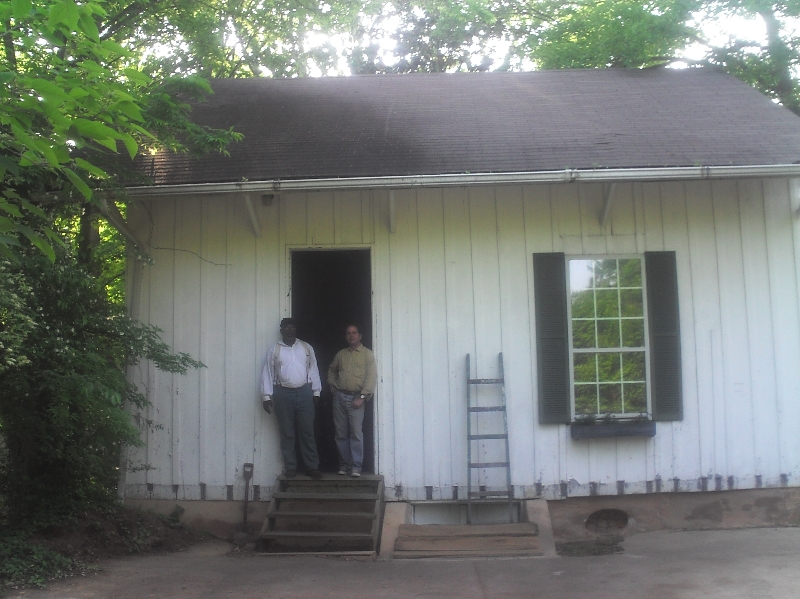
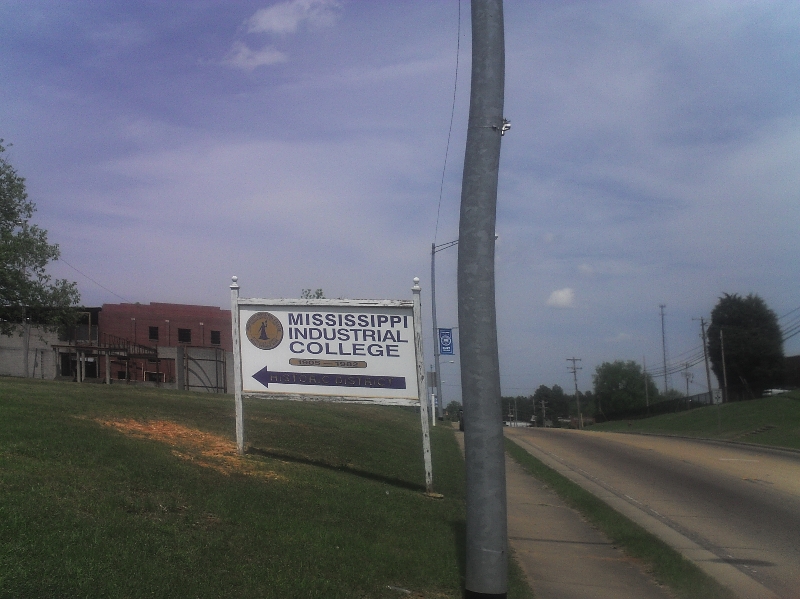

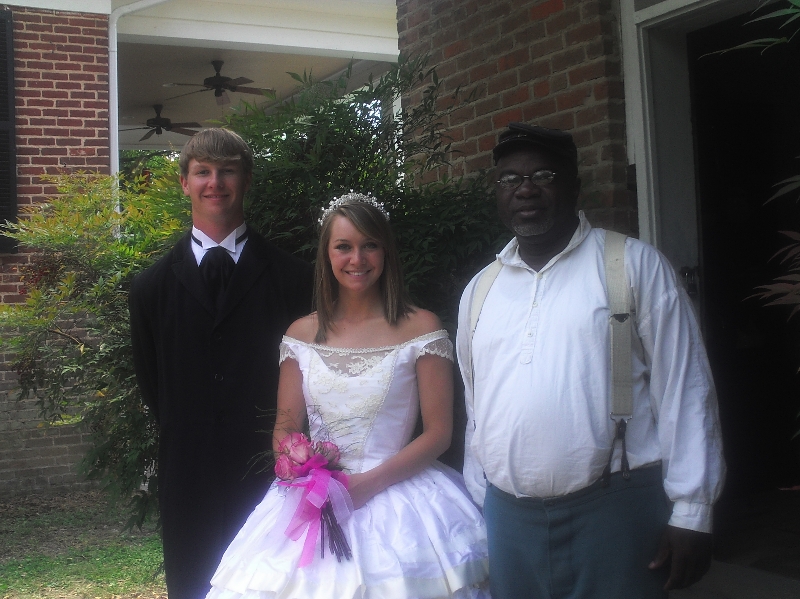
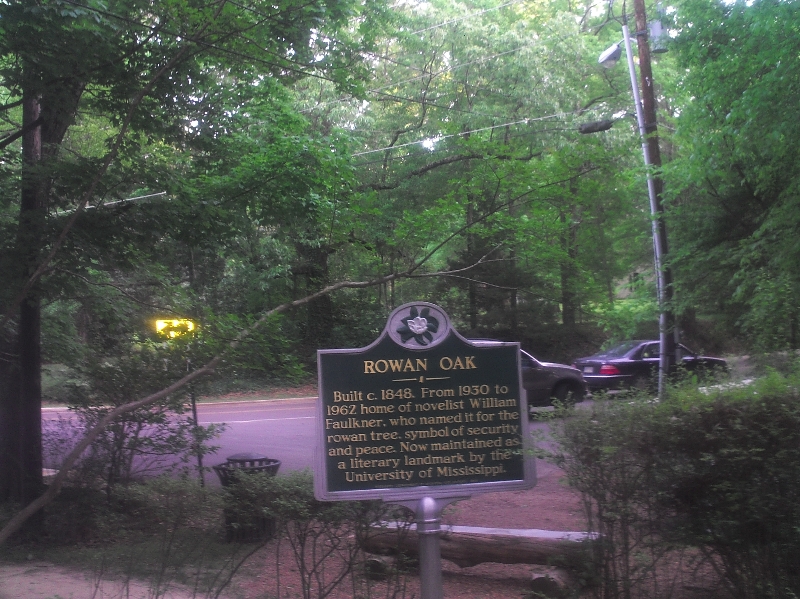
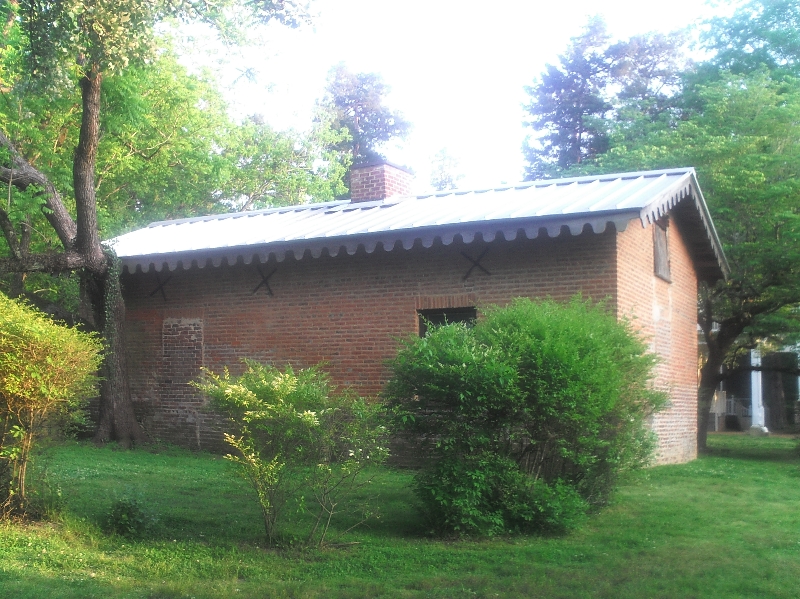









Thank you for this amazing article. You are right — what about the personal lives "Behind the Big House"? We are grateful that you keep us remembering, because there are so many incentives to forget and minimize this enormous, difficult past.